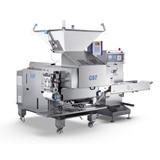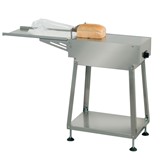Planning to invest in a bread and cake production line in Australia? This detailed guide covers prices, operational tips, maintenance, financing options, and certification requirements to help you choose the perfect system for your bakery’s growth.
Key Takeaways
- Price range: Bread and cake production lines in Australia cost $60,000 to $1M+, based on capacity, automation, and customisation.
- Production capacity: Output ranges from 1,000 to 20,000+ units/hour; choose based on daily demand and shift structure.
- Types of systems:
- Bread lines: Mixers, dividers, proofers, ovens, conveyors.
- Cake lines: Mixers, depositors, ovens, decorating, packaging.
- Maintenance: Annual costs range $5,000–$20,000+. Common parts: belts, bearings, heating elements, control panels.
- Financing: Equipment loans, operating leases, and chattel mortgages available. E.g. $300k line ≈ $5,950/month over 5 years.
- Installation: Setup can take 2–42 days depending on complexity. Pre-check site layout, access, and services.
- Training & support: Onboarding should cover use, hygiene, troubleshooting. Ask for tailored training and digital resources.
- Compliance: Must meet RCM, AS/NZS 4024, FSANZ 3.2.3, be HACCP-compatible, and often ISO 22000 certified.
Introduction
Investing in a bread and cake production line is a significant decision for Australian bakeries aiming to scale operations, improve efficiency, and meet growing demand. This guide provides detailed insights into the types of machines available, pricing, operational considerations, maintenance, financing, warranties, and compliance requirements specific to the Australian market.
Types of Bread & Cake Production Lines
Bread Production Lines
Designed for high-volume bread production, these lines automate processes from dough mixing to baking.
Features:
- Dough mixers and dividers
- Proofing chambers
- Baking ovens
- Cooling conveyors
Applications:
- White and wholemeal loaves
- Baguettes and artisan breads
Cake Production Lines
Tailored for producing various cake types, these lines handle batter preparation to packaging.
Features:
- Batter mixers
- Depositors and moulders
- Baking ovens
- Decorating and packaging units
Applications:
- Sponge cakes
- Layered and decorated cakes
Pricing Overview
Prices vary based on capacity, automation, and customisation.
Bread Production Lines:
- Small-scale (up to 1,000 loaves/hour): $50,000 – $150,000
- Medium-scale (1,000–5,000 loaves/hour): $150,000 – $500,000
- Large-scale (over 5,000 loaves/hour): $500,000 – $1 million+
Cake Production Lines:
- Entry-level (manual decoration): $60,000 – $200,000
- Semi-automated: $200,000 – $600,000
- Fully automated: $600,000 – $1 million+
Operational considerations
Capacity planning
Choosing the right capacity ensures efficiency without overspending.
- Daily output: Match line capacity to your expected production—e.g. 3,000 units/day may only require 1,500 units/hour with two shifts.
- Product variety: Select modular or multi-function systems if producing both bread and cakes.
- Scalability: Look for expandable lines that support future growth.
Space requirements
Proper layout supports workflow, hygiene, and safety.
- Line size: Expect 10–50 metres of floor space depending on automation level.
- Access: Allow 800–1,000 mm clearance for cleaning and servicing.
- Airflow: Ensure ventilation, especially around ovens and cooling tunnels.
- Storage: Include space for ingredients, packaging, and finished goods.
Utility requirements
Reliable infrastructure is essential for consistent output.
- Power: Most equipment requires 415 V three-phase; confirm amperage per machine.
- Water: 2–4 bar pressure needed for dough prep and cleaning. Backflow prevention may be required.
- Gas: Ovens may run on LPG or natural gas; check AS/NZS 5601 compliance.
- Compressed air: Needed for automation; ensure steady 6–8 bar supply.
- Drainage: Floor drains or sump pumps should handle fast discharge.
Maintenance and parts
Routine servicing
Regular upkeep extends machine life and ensures safety.
- Daily: Clean all food-contact surfaces.
- Weekly: Check belts, bearings, and moving parts.
- Monthly: Lubricate joints, inspect electrical panels.
- Annually: Book professional servicing.
Replacement parts
- Belts & bearings: Replace every 12–24 months.
- Heating elements: $1,000–$3,000 depending on model.
- Control panels & sensors: Varies; ensure surge protection.
Annual maintenance cost:
$5,000–$12,000 for basic lines; $12,000–$20,000+ for larger, automated systems.
Financing options in Australia
Equipment finance helps spread costs and conserve cash flow.
- Equipment loans: Fixed repayments, full ownership at end.
- Operating leases: Lower monthly costs, upgrade options.
- Chattel mortgages: Equipment as security; may offer tax advantages.
Example: A $300k line over 5 years at 7% interest ≈ $5,950/month.
Warranties and after-sales support
Strong support reduces downtime and protects your investment.
- Standard warranty: 12–24 months, covering key components.
- Extended warranty: Up to 5 years (extra cost, usually negotiated upfront).
- After-sales support:
- Local technician access
- Spare parts stocked in Australia
- Operator training (in-person or remote)
Ask for written service agreements with defined response times.
Compliance and certification in Australia
To legally operate and meet customer and audit expectations, your bread and cake production line must comply with multiple Australian food, electrical, and safety standards.
Core compliance requirements
- RCM (Regulatory Compliance Mark): Mandatory for all imported electrical equipment. Confirms compliance with Australian EMC (electromagnetic compatibility) and electrical safety standards.
- AS/NZS 4024: Covers machinery safety — including emergency stops, interlocks, guarding, and safe operator access.
- FSANZ Standard 3.2.3: Requires that all food-contact surfaces are non-toxic, smooth, corrosion-resistant, and easy to clean.
- HACCP-compatible design: Equipment should support your Hazard Analysis and Critical Control Point plan — this includes hygienic design, traceability, and ease of inspection.
- ISO 22000 certification: Not legally required, but often essential for food exporters, national retailers, or large-scale food service clients.
Installation timeline and project planning
Setting up a bread and cake production line is not a simple plug-and-play process — it requires careful planning to avoid costly delays or compliance issues. Many Australian businesses underestimate the time and preparation required. This section outlines key steps for a smooth transition from delivery to first production.
Pre-delivery preparation
Before the equipment arrives, make sure your site is ready:
- Layout finalisation: Confirm positioning of each unit to optimise workflow and meet safety requirements.
- Access and logistics: Check doorway widths, hallways, and lift capacities to ensure smooth equipment delivery.
- Utility readiness: Verify that all necessary services — power, gas, water, compressed air, and drainage — are available and correctly positioned.
Installation duration
Installation times vary based on system scale:
- Smaller/modular lines: Typically 2–5 days.
- Larger automated setups: 3–6 weeks for mechanical install, wiring, integration, and safety checks.
Avoid delays by completing flooring, access, and utility preparations in advance.
Commissioning and testing
Commissioning ensures your system runs correctly and safely:
- Dry runs: Initial startup checks without ingredients.
- Trial batches: Run sample recipes to fine-tune flow, timing, and temperature.
- Tuning: Adjust speeds, pressures, and dosing for your specific throughput and product specs.
Ask your supplier for a commissioning schedule and confirm if recipe support is included.
Final handover and documentation
A formal handover should include:
- Staff training on cleaning, safety, and operation.
- Printed/digital manuals specific to your model.
- Warranty registration and service contact details.
- Spare parts catalogue for maintenance planning.
Thorough documentation helps protect your warranty and speeds up staff onboarding.
Training and operational support
Buying a production line is just the start — proper training and support are essential to avoid downtime and ensure safe, efficient operation.
Onboarding training
Most suppliers should include hands-on training at installation. It should cover:
- Daily operation and shutdown
- Batch programming and recipe selection
- Cleaning and hygiene procedures
- Basic fault troubleshooting
Check if training can be scheduled around shifts or tailored to your production schedule.
Operator manuals and resources
Ensure your supplier provides:
- Model-specific manuals (not generic)
- Video tutorials or digital modules
- Translated resources if needed
These support tools help onboard new staff and reduce reliance on external tech support.
Ongoing technical support
Understand what’s available after install:
- Initial support: 1–3 months is common — confirm if this includes on-site visits.
- Remote diagnostics: Helpful for fast fault resolution in IoT-enabled systems.
- Long-term plans: Ask about per-call fees, retainers, or service agreements with guaranteed response times.
Strong support reduces downtime and helps you get the most from your investment.
Common Questions from Buyers
Q1: How do I determine the right production line capacity for my bakery?
Assess your daily production volume and growth projections. For example, if you aim to produce 2,000 loaves per day, a medium-scale line with a capacity of 1,000 loaves/hour would suffice.
Q2: What factors influence the cost of a production line?
Key factors include production capacity, automation level, customisation, and brand reputation.
Q3: Are there financing options available for purchasing equipment?
Yes, various financing options such as equipment loans, operating leases, and chattel mortgages are available through Australian financial institutions.
Q4: What maintenance is required for bread and cake production lines?
Regular cleaning, inspection of moving parts, lubrication, and timely replacement of worn components are essential for optimal performance.
Q5: How can I ensure the equipment meets Australian compliance standards?
Request compliance certificates from suppliers, including RCM, ISO 22000, and HACCP certifications, to ensure adherence to Australian regulations.
Conclusion
Investing in a bread and cake production line in Australia requires careful consideration of various factors, including equipment types, pricing, operational needs, maintenance, financing, warranties, and compliance requirements. By thoroughly evaluating these aspects, you can make an informed decision that aligns with your business goals and ensures long-term success in the competitive bakery industry.





-160x160-state_article-rel-cat.png)






